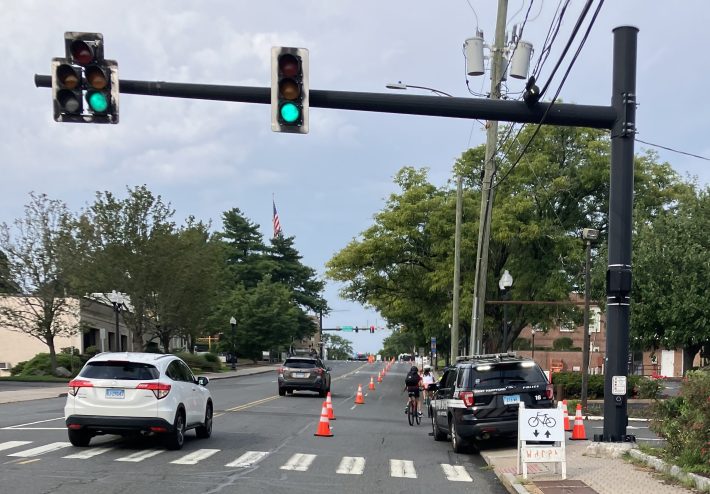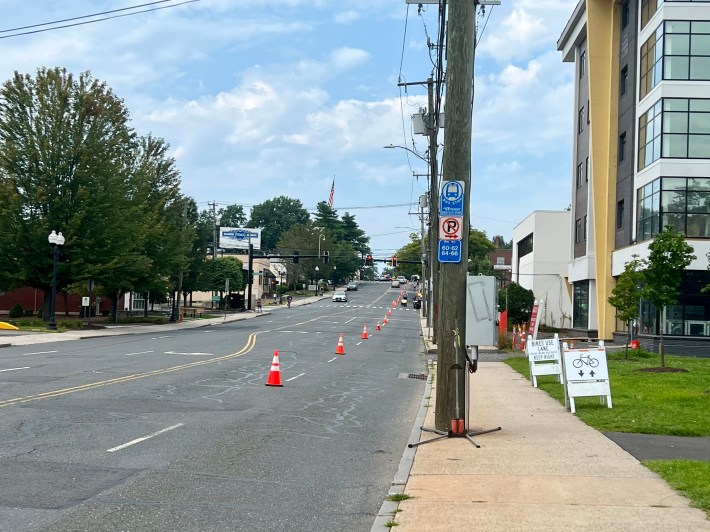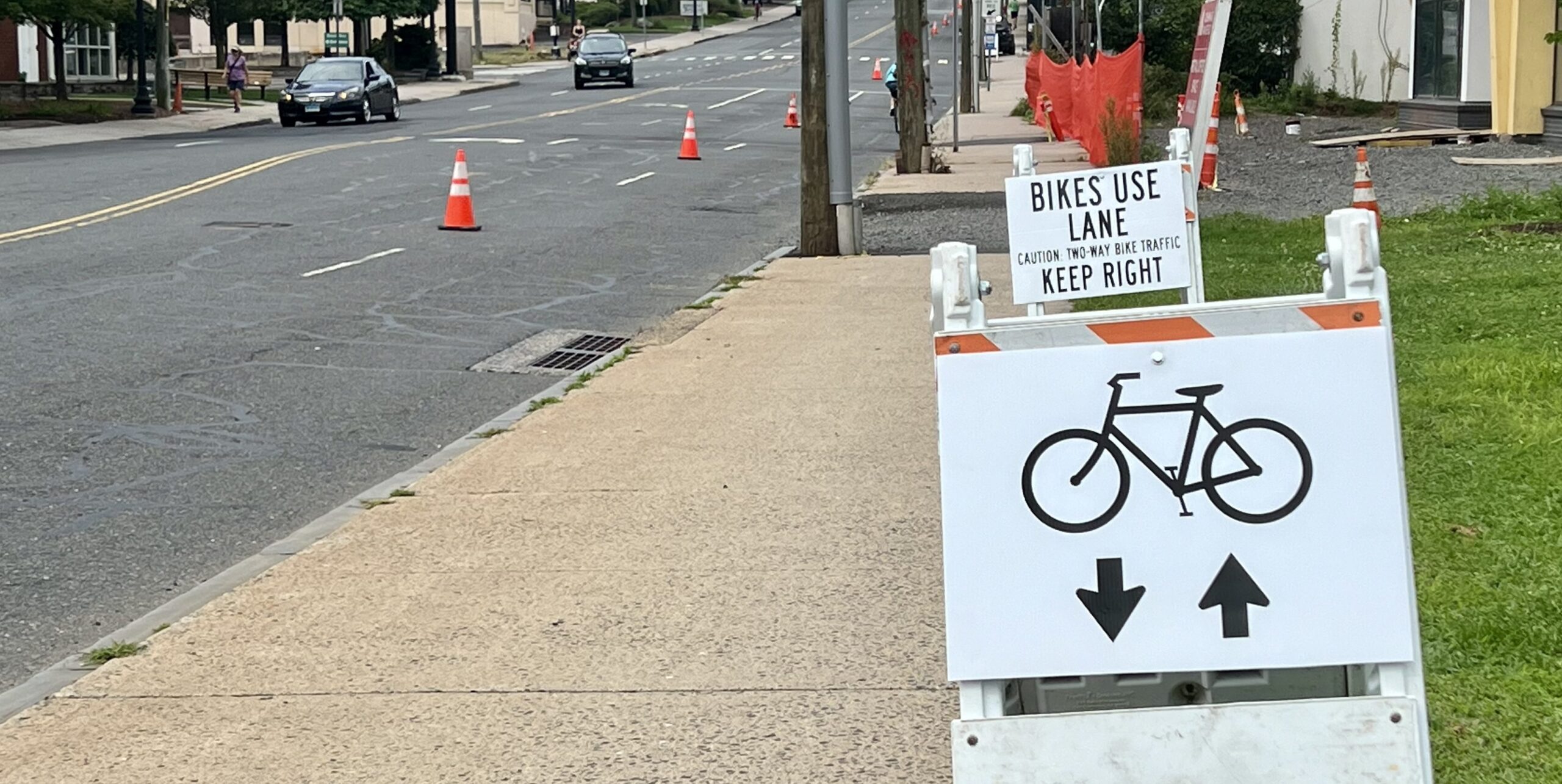Why should anyone have to get in a car just to access a car-free street festival?
That was the question advocate Jay Stange asked himself after attending Center Streets in West Hartford, which closes a four-block loop of its downtown to motor vehicle traffic for a half day of pedestrian- and bike-friendly fun. Inspired by “open-streets”-style events around the world like Colombia’s famous “Ciclovía”, Center Streets has become a staple in the Connecticut community of 65,000 for seven years, attracting thousands of unique visitors — not all of whom have a safe and comfortable way to get there without climbing behind the wheel.
“Last year, what I noticed is that a lot of people in West Hartford were putting their bicycles on their cars and driving to town center to participate in center streets, which I thought was kind of sad,” Stange said. “[People shouldn’t] have to strap their bicycles on their cars to get to a bike- and pedestrian-friendly event.”

Stange’s answer to that problem could serve as a model for other U.S. communities: a pop-up bike lane that leveraged the city’s biggest biking day of the year to inspire a push for more permanent infrastructure.
Built out of little more more than tactical urbanism-style traffic cones along the edge of a nearly 60 foot-wide arterial, the path helped the community see for themselves just how easily the off-street trails near West Hartford’s downtown could be connected to the city core — and how little they’d lose by giving a lane back to people.
“A lot of people don’t seem to be able to really visualize these [projects] with maps alone,” said Stange. “And so when you actually have cones laid out for people to see it with their own eyes and pedal it with their own legs — it really makes a big difference.”

Stange says, though, that providing that proof of concept wasn’t 100 percent easy.
Despite the support of the city and non-profit Bike West Hartford — both of which co-sponsor Center Streets itself — he and other advocates learned just a week before that they’d have to crowd-fund $1,800 to make it happen. The city needed the money to pay public works staff and police, who would lay out the cones and write tickets to drivers who didn’t respect the lane.
Thanks to a successful GoFundMe campaign, Stange and his community pulled together the cash in just three days. But they wish the city had steady funding for such projects.
“A few thousand dollars a year for a pedestrian/bicycle event doesn’t seem like it’s a big ask,” he added. “But when you get right down to the town’s capital and operations budget — and I think this is probably something that you’re going to find in a lot of mid-sized towns all around North America — we don’t have a significant amount of [money] built in each year for ped and bicycle infrastructure and programming.”

Still, Stange said that the pop-up lane was worth the stressful last-minute fundraising, and he hopes the project can be instructive to other advocates who want to pull off a similar feat in their communities.
He’s particularly thankful that his group was able to build on the existing partnership between the city and the Bike West Hartford to get them to take a chance on creating car-free space outside Center Streets’ usual footprint. He’s also happy he could leverage the popularity of the festival itself to guarantee strong ridership and extra attention from elected officials, some of whom rode the route.
Of course, with holiday parades, street festivals, and fairs, virtually every town in America hosts some kind of car-restricted event, whether they think of them as pedestrian and bike-friendly “ciclovías” or not. And if more cities can seize those moments as an opportunity to pop-up car-free routes to the festivities, they could slowly make the case for permanent paths everywhere.
“You have to build that double helix of culture and infrastructure to support a growing mode share of bicycle riders in your community,” added Stange. “It takes time and patience — and it’s a long game here in auto-centric North America.”
